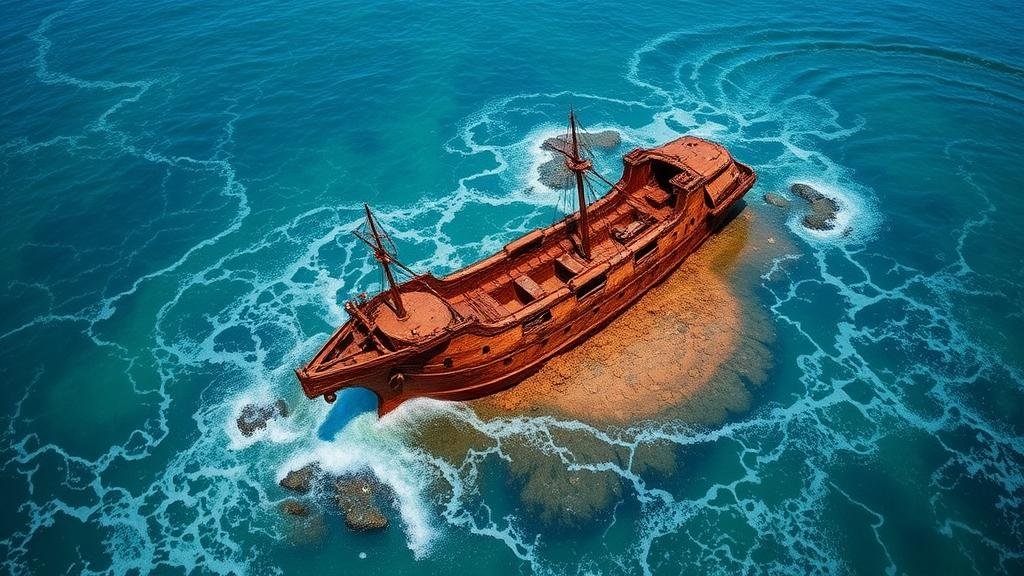Using Tidal Erosion Patterns to Locate Shipwreck-Displaced Treasures
Using Tidal Erosion Patterns to Locate Shipwreck-Displaced Treasures
The search for shipwreck-displaced treasures has long fascinated historians, archaeologists, and treasure hunters alike. Recent advancements in understanding tidal erosion patterns offer promising methodologies for locating these hidden treasures. This article explores how tidal erosion contributes to treasure displacement, the techniques utilized in researching these patterns, and case studies illustrating successful recoveries. By analyzing the interaction between tidal forces and coastal geology, we can enhance our search techniques and potential finds.
The Science of Tidal Erosion
Tidal erosion refers to the process through which coastal landforms are shaped and eroded by tidal forces, specifically the gravitational pull exerted by the moon and sun. This phenomenon not only impacts the physical landscape but also influences where historical artifacts, such as shipwrecks, may be found.
Tides create strong currents that can move large amounts of sediment, revealing or concealing artifacts on the ocean floor or near shorelines. Understanding tidal patterns is critical; for instance, areas with strong tidal fluctuations are more likely to exhibit significant erosion, potentially exposing treasures that have been buried under layers of sediment.
- Spring Tides: Occur when the sun and moon are aligned, creating higher high tides and lower low tides.
- Neap Tides: Happen when the sun and moon are at right angles concerning Earth, resulting in lower tidal ranges.
Methodologies for Analyzing Tidal Erosion
Several methodologies have been developed to analyze tidal erosion patterns effectively. e approaches often utilize a combination of technologies, including satellite imagery, Geographic Information Systems (GIS), and hydrodynamic modeling.
Satellite Imaging and GIS
Satellite imagery provides a macro view of coastal changes over time. By comparing historical images with current data, researchers can identify locations where erosion has led to the exposure of new landforms, potentially uncovering shipwreck sites. GIS technology further allows for the integration of various data types, such as elevation and sediment composition, creating detailed maps that highlight high-risk erosion areas.
Hydrodynamic Modeling
Hydrodynamic models simulate tidal currents and wave actions on coastal structures, providing insights into how these forces contribute to erosion. e models can predict sediment transport and deposition patterns, which are critical in locating potential shipwreck sites that may have previously been submerged or buried. For example, researchers at the University of South Florida employed this technique to assess areas along the Gulf of Mexico, uncovering significant shipwreck sites that had previously gone undetected.
Case Studies of Successful Recoveries
Numerous case studies exemplify the successful application of tidal erosion analysis in treasure recovery efforts. These examples shed light on the methodologies and the importance of interdisciplinary collaboration.
The Whydah Gally
The infamous pirate ship Whydah Gally sank off the coast of Cape Cod in 1717. In the 1980s, marine archaeologist Barry Clifford used tidal erosion patterns to determine where to focus his search efforts. The analysis of sediment movement and historical tidal shifts led to the discovery of the shipwreck, which yielded a treasure estimated to be worth over $400 million, consisting of gold coins, jewelry, and artifacts.
La Belle
Another notable example is the French ship La Belle, which sank in 1686 near Matagorda Bay, Texas. In this case, researchers utilized both historical documents and hydrodynamic modeling to trace areas of sedimentation that had altered the seabed over centuries. r findings led to the successful excavation of the ship and its valuable cargo, providing significant insights into French colonial history.
Challenges and Future Directions
While promising, the study of tidal erosion and the search for shipwreck-displaced treasures are not without challenges. Factors such as weather conditions, marine conservation regulations, and funding can impact recovery operations. Also, many shipwrecks have further deteriorated due to environmental conditions or have been scattered over wide areas, complicating recovery efforts.
To enhance future initiatives, interdisciplinary collaboration remains crucial. Geologists, historians, marine archaeologists, and data scientists must work together to create more comprehensive studies. The advancement of drone technology and underwater robotics also offers exciting opportunities for more in-depth exploration of hard-to-reach areas.
Actionable Takeaways
- Use satellite imagery and GIS mapping to gather historical data on coastal changes.
- Incorporate hydrodynamic modeling to predict sediment flow and areas of potential treasure recovery.
- Engage in interdisciplinary collaborations to combine expertise across relevant fields.
- Stay informed about environmental regulations and conservation efforts that might impact recovery operations.
As researchers continue to refine their methods and technologies, the intersection of tidal erosion and historical treasure hunts promises to uncover countless stories lost to the depths of the sea. Understanding these coastal dynamics not only unravels our maritime histories but also holds the key to unlocking treasures buried by time and tide.



